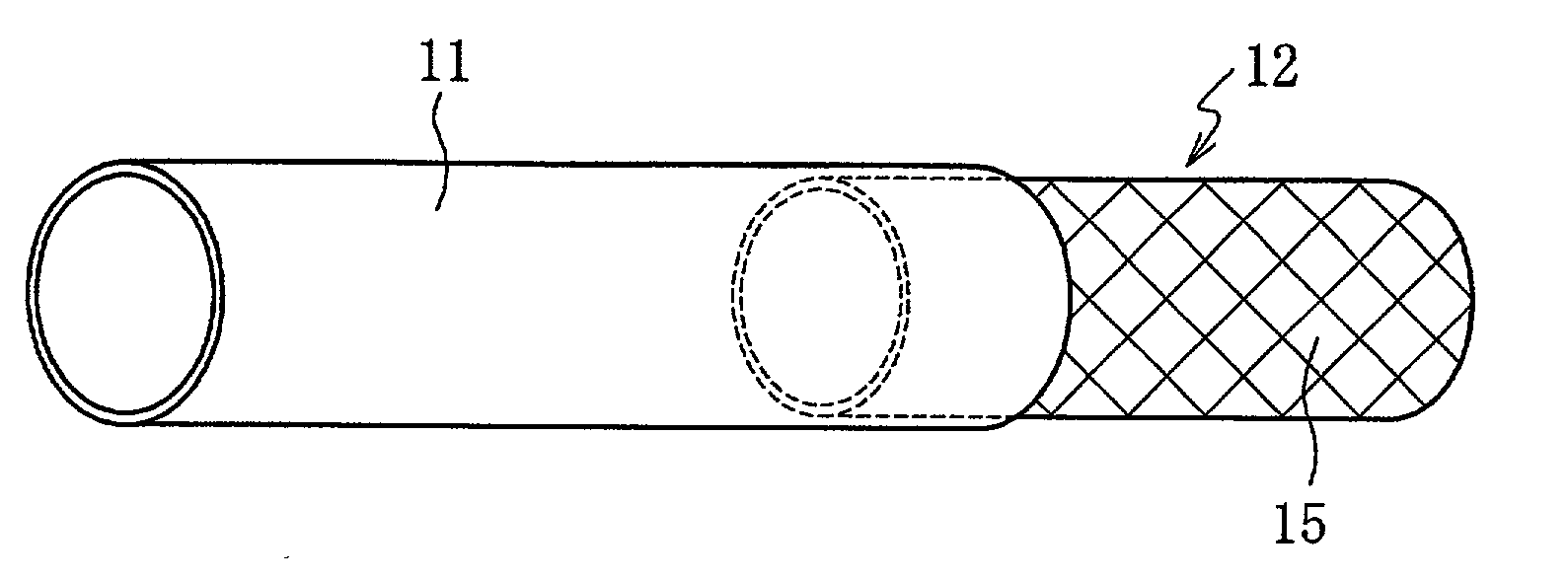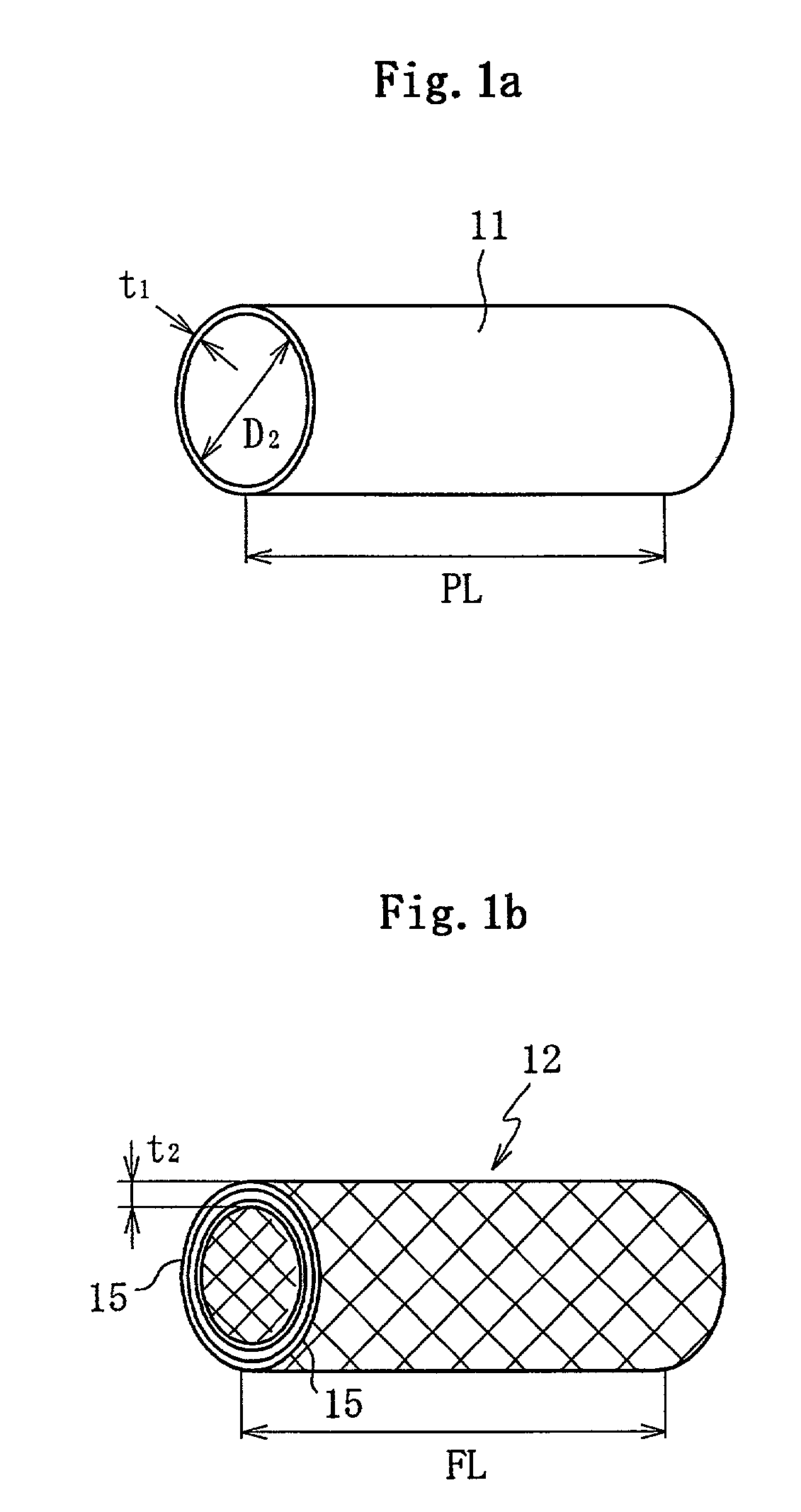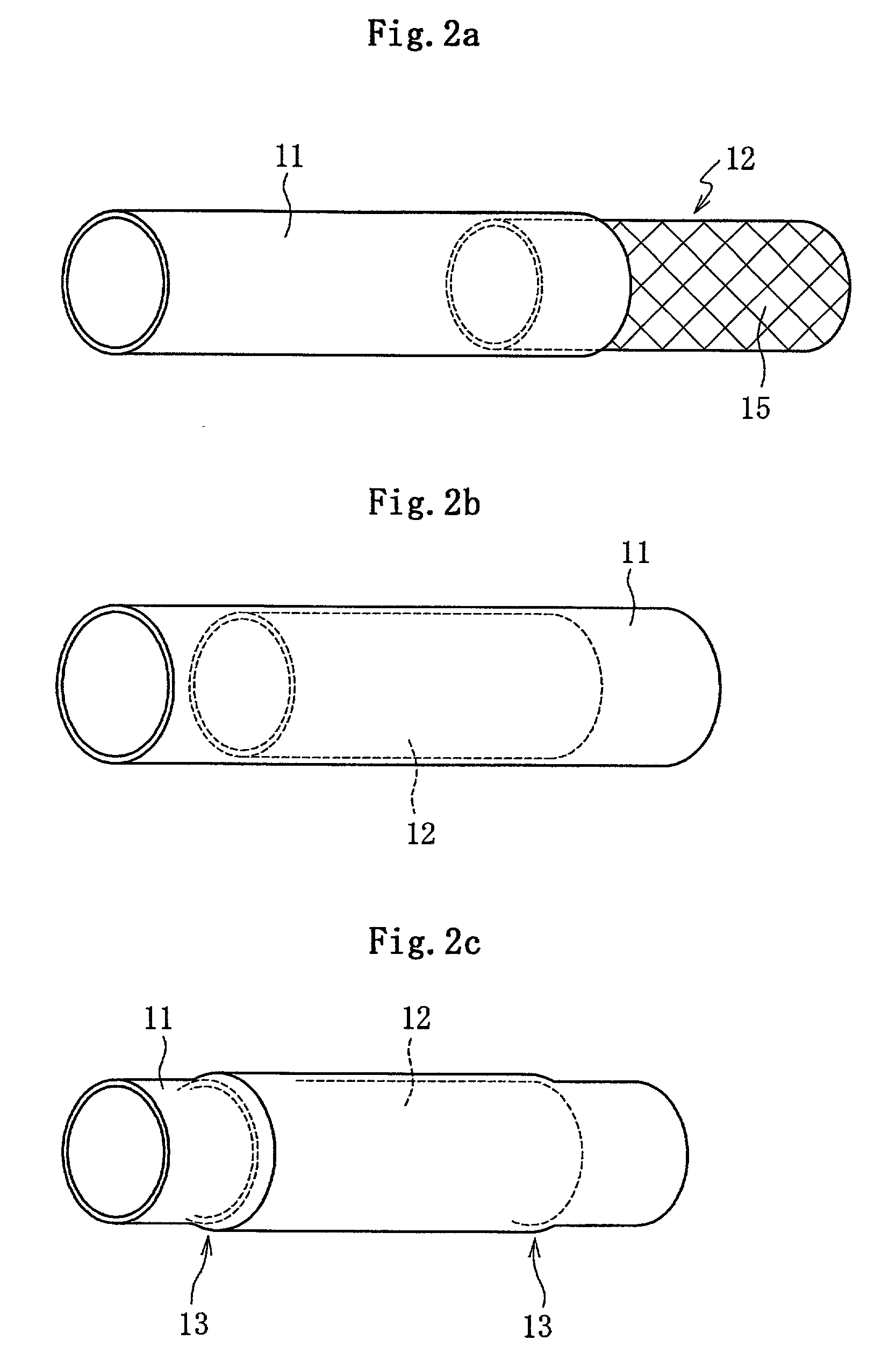Fiber reinforced plastic pipe and power transmission shaft employing the same
a technology of fiber reinforced plastic pipe and power transmission shaft, which is applied in the direction of pipes, mechanical equipment, transportation and packaging, etc., can solve the problems of destroying the effectiveness of the aforementioned various techniques, difficult to provide an elongated shaft, and complex assembly
- Summary
- Abstract
- Description
- Claims
- Application Information
AI Technical Summary
Benefits of technology
Problems solved by technology
Method used
Image
Examples
Embodiment Construction
, the pultrusion process was used to form an FRP pipe (70 mm in outer diameter and 3 mm in thickness) while the tow of PAN-based carbon fibers of elasticity 255 kN / mm.sup.2, "PYROFIL TRH50 made by Mitsubishi Rayon Co., Ltd.," and a continuous strand mat employing glass fibers of elasticity 72.3 kN / mm.sup.2, "CSM#300 made by Asahi Fiber Glass Co.," were being impregnated with a vinyl ester resin, "8250H made by Japan U-Pica Co., Ltd."
[0086] The glass fiber sheet 15 was arranged on the outer and inner surface layers of the FRP pipe 12, while carbon fibers were spun and aligned in the axial direction. A slit of 0.8 m in length and 9 mm in width was provided on the FRP pipe, which was then elastically deformed in the circumferential direction. Then, the FRP pipe was inserted into a steel pipe (of STKM13B, 70 mm in outer diameter, 1.4 mm in thickness, and 0.9 m in length) down to the middle portion. Then, the FRP pipe with the slit was allowed to expand in the circumferential direction t...
PUM
| Property | Measurement | Unit |
|---|---|---|
| thickness | aaaaa | aaaaa |
| angles | aaaaa | aaaaa |
| bias angle | aaaaa | aaaaa |
Abstract
Description
Claims
Application Information
 Login to View More
Login to View More - R&D
- Intellectual Property
- Life Sciences
- Materials
- Tech Scout
- Unparalleled Data Quality
- Higher Quality Content
- 60% Fewer Hallucinations
Browse by: Latest US Patents, China's latest patents, Technical Efficacy Thesaurus, Application Domain, Technology Topic, Popular Technical Reports.
© 2025 PatSnap. All rights reserved.Legal|Privacy policy|Modern Slavery Act Transparency Statement|Sitemap|About US| Contact US: help@patsnap.com



